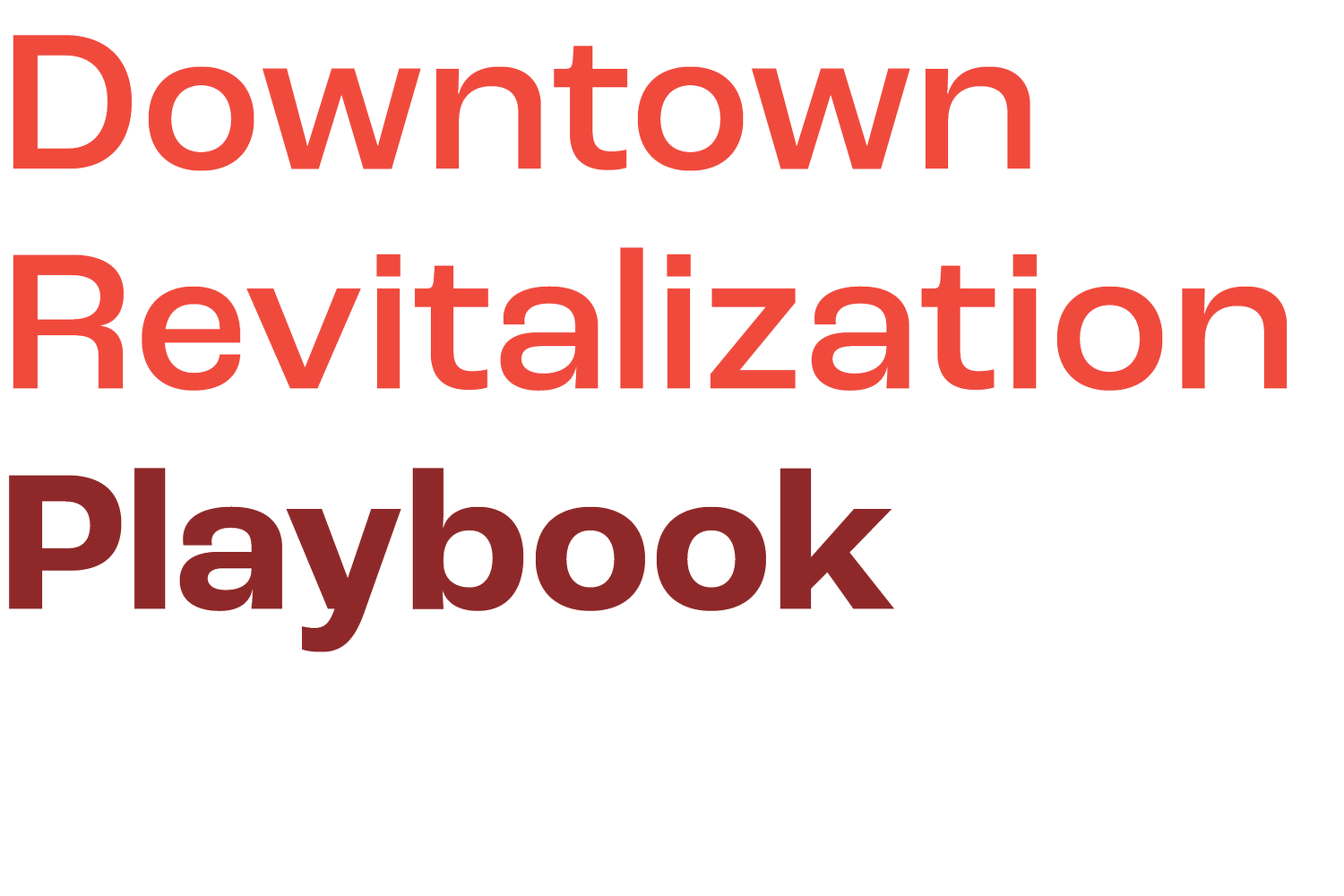
Readiness Factors
The first step in downtown revitalization is to identify and build on existing assets. The Environmental Protection Agency (EPA) states: “Identify the assets that offer the best opportunities for growth and develop strategies to support them. Assets might include natural beauty and outdoor recreation, historic downtowns or arts and cultural institutions.”
The readiness assessment can help your community identify which factors you have in place to leverage for downtown revitalization while also providing context for how the community can overcome any acknowledged challenges. You can take the readiness assessment online or download it as a pdf.
Research for this Playbook identified the following factors that promote investment readiness for rural communities. While there is no magic formula to spark downtown revitalization, there are factors that can help create the necessary conditions for success. Furthermore, these factors can also signal to potential investors that a community or project is likely to offer a good return on investment for them. Generally, these factors help create a healthy environment for investment. While not all factors need to be in place for a community to be investment ready, each factor can build on the others to help the community become more investable.
Community Assets
Community assets are the foundation of downtown revitalization investment. Community assets include partners, leadership, and networks, and the capacity these groups have to plan and achieve shared priorities. Partners may include: community foundations, lenders, educational leaders, businesses, and community members, particularly young people.
The collective skills, knowledge, abilities, and social infrastructure create the capacity to understand and actualize investment - which is too much for any single organization to handle. The focus should be on building trust and networks (social capital), creativity and imagination about what’s possible (intellectual capital), and community members’ and partners’ skills (individual capital) - three of the foundational community capitals useful in pushing any initiatives forward.
Local Government and Civic Structures
Civic structures entail community self-identity and how the local government can help via the use of municipal tools. In smaller communities, informal citizen networks can support units of government that rely on part-time elected officials. In very rural communities, citizen engagement can substitute for public sector capacity.
Municipalities have access to grants and public funding, and local governments can help with issues such as streetscape improvements, incentivizing affordable commercial spaces, and employing appropriate zoning regulations. Municipal economic development committees may be helpful in incentivizing redevelopment and marketing the community as a place with potential.
Economic Ecosystem
The goal of an economic ecosystem is to nurture a local economy to become regionally connected, innovative, and rooted in the assets of its local residents and businesses. One way of understanding the economic ecosystem is by understanding the focus and diversity of businesses and organizations best suited to the sustainability of your downtown, including retail, food, attractions, services, small manufacturing, educational institutions, residential areas, and recreation businesses.
It is also critical to understand demand and end users. Who are the individuals who spend money that makes the proposed economic development viable? Are they residents, or are they tourists/visitors? If the latter, why do they come? What is our competitive advantage for attracting spenders and spending? Often these are natural assets, parks/trails, cultural destinations, attractions, etc. It’s also useful to know what products/services are not available locally and where people travel beyond the community to purchase them, and a strategy to bring those products/services back to downtown.
Built Infrastructure
Built infrastructure like water/wastewater utilities, roads, sidewalks, and broadband are key resources for enabling successful downtown revitalization. However, they must be accessible, flexible, and advance community health and resiliency. Technology amenities are especially critical to attract remote workers to rural places. The COVID-19 pandemic has shown just how valuable broadband can be in allowing people to work remotely, connect to schoolwork, access healthcare, and even connect with each other.
Improvements to the built infrastructure require financial investment and access to investment partners, including local banks, community foundations, community development finance Institutions (CDFIs), and regional and national foundations. Having a plan or process to incentivize rehabilitation and bring viable downtown buildings back into productive use that may otherwise be vulnerable to neglect and decay is key.
Natural Environment
Connections to the natural environment through local parks, bike trails, and walking paths can make rural downtowns more attractive. Greenspaces like greenways and bike paths can connect people to downtown, and rural downtowns may also be a jumping off point for natural assets that are farther away. The way communities build on and promote their natural environment can improve the success of their downtown revitalization efforts.
The recreation economy is strong, generating significant jobs and consumer spending. To have a successful recreation economy, it is important to have healthy natural assets that people want to engage with, as well as attractive downtowns to visit in between recreation opportunities.
